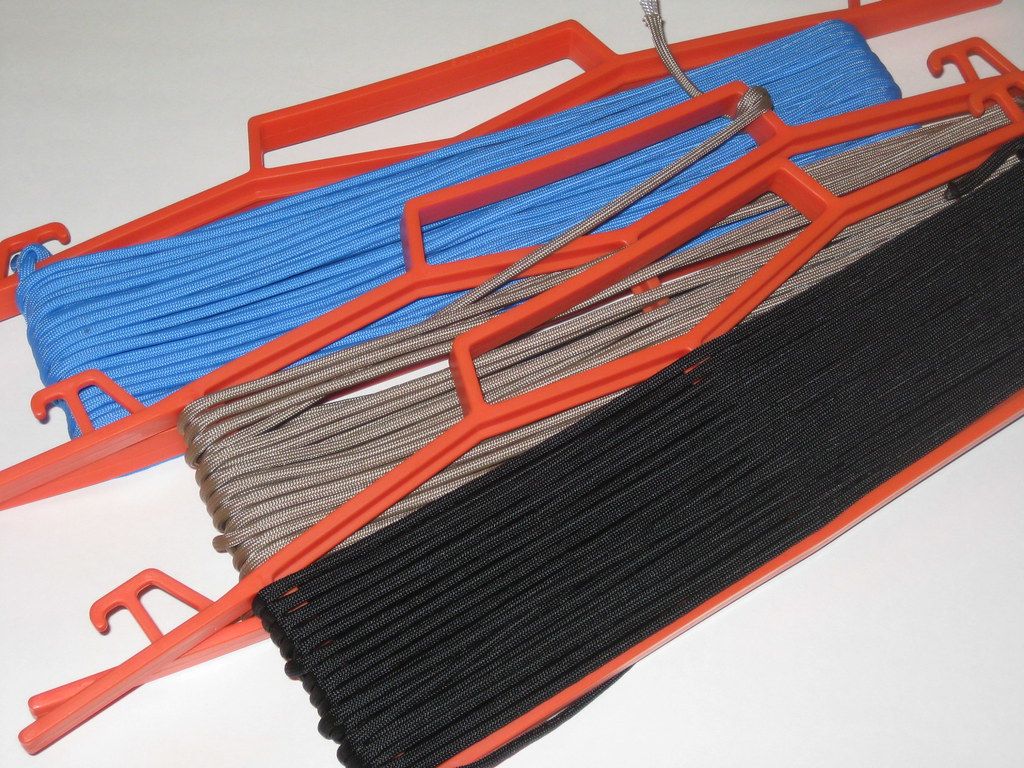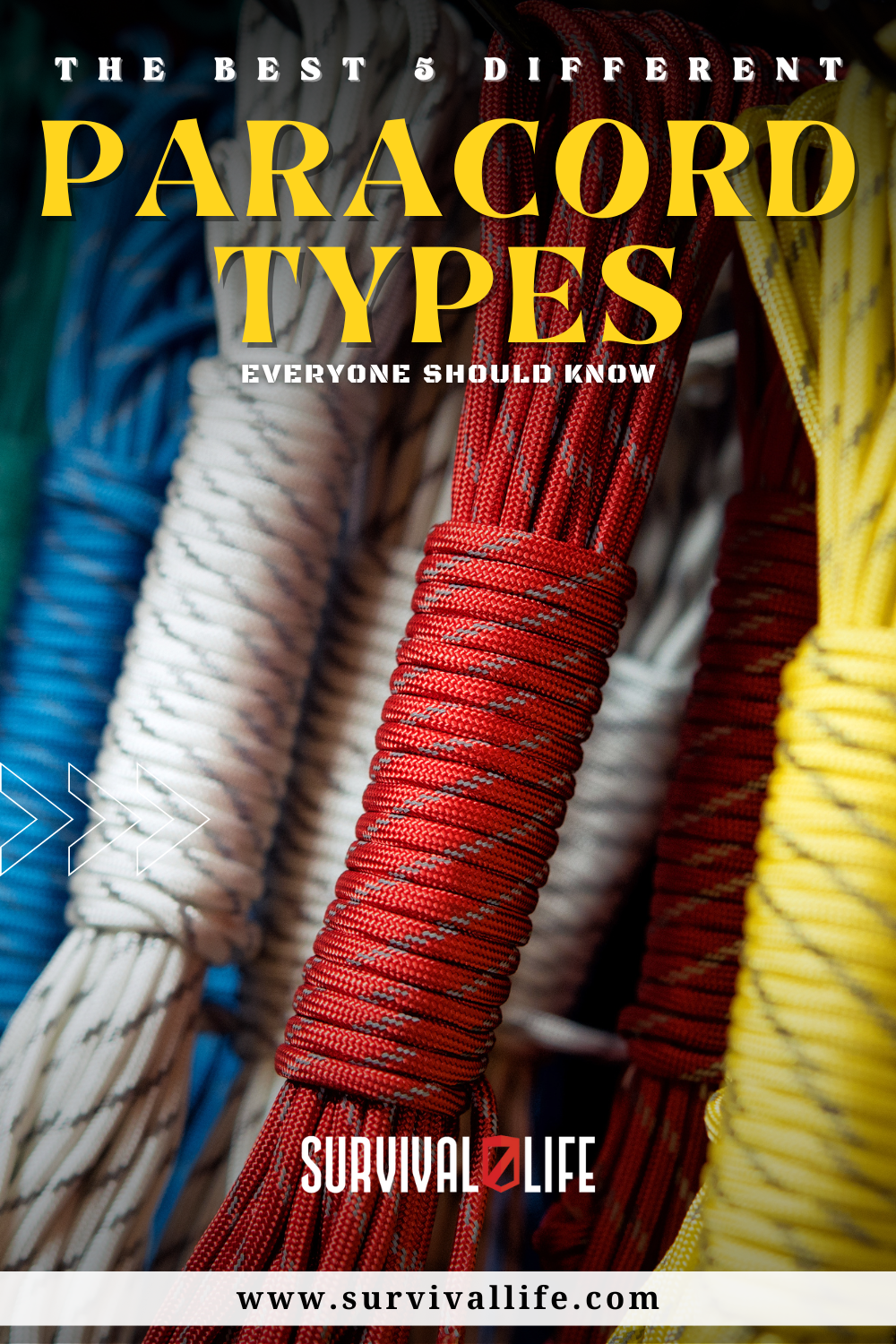Paracord Projects
5 Paracord Types Everyone Should Know

Different paracord types are available to cater to various needs and applications. Each paracord type is designed with specific characteristics, breaking strengths and features, making them suitable for different situations. Varying paracord types allow users to choose the most appropriate cordage based on their requirements.
In this article, we will explore five essential paracord types that everyone should know. From the well-known 550 paracord to the more specialized microcord, understanding these types will expand your knowledge of this versatile cordage.
Types of Paracord
All paracord types versatility lies in their ability to be compactly coiled and easily carried yet capable of unraveling to provide a considerable length of cordage when needed. This feature makes it valuable for outdoor enthusiasts, hikers, campers, survivalists, and anyone who values preparedness and utility.
Type I Paracord
Type I, or 95 cord or accessory cord, is the thinnest variant. It features a single nylon strand with a minimum breaking strength of 95 pounds.
While Type I paracord may not possess the heavy-duty strength of other types, it finds its niche in various applications. It is famous for crafting bracelets, keychains, and other lightweight accessories.
The vibrant colors and patterns make them visually appealing and stylish. Additionally, Type I paracord is commonly used for decorative purposes, adding a touch of personal flair to everyday items.
Type II Paracord
Paracord Type II, also referred to as 275 cord, is one of the most popular types of paracord. It comprises a nylon sheath and seven inner strands, each containing two or three smaller strands.
One of Type II paracord’s primary uses is crafting various items such as bracelets, keychains, and lanyards. Its wide availability in different colors and patterns allows for customization and personalization of these accessories.
In outdoor settings, Type II paracord serves well as tent guy lines, clotheslines, or general-purpose utility lines. It can also secure equipment and gear during camping, hiking, or other outdoor activities.
Type III Paracord
Type III paracord, or 550 paracord, is similar to Type II paracord in construction. It features a nylon sheath and seven inner strands, offering a minimum breaking strength of 550 pounds.
Common Uses
Type III paracord finds applications in various fields due to its versatility. In camping and outdoor activities, it can be used for setting up tents, creating shelter, securing equipment, or making emergency repairs.
Crafters and DIY enthusiasts utilize Type III paracord for creating bracelets, keychains, lanyards, and other personalized items. Moreover, Paracord Type III is an essential tool in emergency and survival, providing utility in constructing shelters, creating traps, or fashioning makeshift tools.
Inner Strands and Their significant
Type III paracord consists of seven inner strands, each composed of two or three smaller strands. Removing the outer sheath can access these inner strands, expanding the cord’s functionality.
They can serve as emergency fishing lines, sutures, gear repairs, or even extra cordage in situations requiring additional length.
Type IV Paracord
Type IV paracord, or 750 cord, is more robust than Type III paracord. It features a nylon sheath and 11 inner strands, providing a minimum breaking strength of 750 pounds.
Common Uses
Paracord Type IV is extensively used in heavy-duty outdoor activities such as camping, hiking, and survival. Its robust construction suits it for rigging shelters, securing gear, and creating emergency rappelling lines.
Paracord Type IV is widely used in tactical and military operations, offering reliability and versatility in demanding environments.
Inner Strands
Type IV paracord consists of eleven inner strands, each composed of two or three smaller strands. Removing the outer sheath can access these inner strands, expanding the cord’s functionality.
Type V Paracord
Type V paracord, or 1000 cord, is the most substantial variant. It offers unparalleled strength and reliability with a minimum breaking strength of 1000 pounds.
Common Uses
Type V paracord finds extensive use in military and tactical operations, where reliability and strength are paramount. It is also commonly utilized in search and rescue missions, providing a dependable lifeline for critical situations. Additionally, Type V paracord excels in rigging scenarios that require high-load capabilities, such as securing heavy equipment or constructing temporary shelters.
Inner Strands and Their Significance
Type V paracord contains eleven inner strands, each composed of two or three smaller strands. These inner strands contribute to the cord’s strength and can be accessed by removing the outer sheath.
In emergencies and survival scenarios, these inner strands provide additional utility, such as creating snares, constructing emergency shelters, or fashioning improvised tools.
Choosing the Right Paracord Type
When selecting the appropriate paracord types for your needs, it is crucial to consider the intended use and strength requirements. Type I paracord is suitable for lightweight projects and decorative purposes, while Type II and Type III paracords are versatile options for general-purpose and survival applications. Type IV and Type V paracords are recommended for heavy-duty tasks that demand exceptional strength and durability.
Common Uses of Paracord Types
Paracord’s versatility makes it an invaluable tool in various situations. Some common uses of paracord include:
- Creating bracelets, keychains, and lanyards
- Making a paracord water bottle handle
- Setting up shelters and tarps
- Securing gear and equipment
- Crafting fishing nets and traps
- Making paracord dog leash
- Repairing outdoor gear and equipment
- Creating emergency tourniquets and slings
- Making paracord shotgun sling
- Building survival bracelets with integrated tools
- Constructing emergency snare traps
- Creating handle wraps for knives and tools
- Making paracord belt DIY
Maintenance and Care Tips
It is essential to ensure the paracord type’s longevity and performance by following proper maintenance and care practices. Here are some tips to consider:
- Keep your paracord clean and dry to prevent mold or mildew growth.
- Avoid exposing your paracord to harsh chemicals or prolonged sunlight, as they can weaken the material.
- Inspect your paracord regularly for signs of wear or damage, such as fraying or discoloration.
- Store your paracord type in a cool, dry place to maintain its quality.
- If your paracord becomes dirty, wash it gently with mild soap and warm water, then allow it to air dry completely before use.
Paracord is an incredibly versatile and durable rope that comes in various types to suit different needs. Whether engaging in outdoor activities, crafting projects, or emergency preparedness, choosing the suitable paracord types is crucial.
Understanding the differences between paracord types allows you to make informed decisions and ensure you have the right tool for the job.
Share your thoughts with us in the comments section below!

Up Next:
- First Aid Kit Buyer’s Guide
- How to Fix a Flat Bike Tire | Bike Tire Flat
- 15 Ideas to Make Paracord Bracelet for Survival
- Top 25 Ways 550 Paracord Can Be Used During Emergencies
- How to Build Bomb Shelter | 15 Steps on How to Build a Bomb Shelter
Follow us on Facebook, Instagram, Twitter, and Pinterest!
Disclaimer: All content on this site is for informational purposes only. Please read our full disclaimer here.
-

 Do It Yourself7 months ago
Do It Yourself7 months agoParacord Projects | 36 Cool Paracord Ideas For Your Paracord Survival Projects
-

 Do It Yourself9 months ago
Do It Yourself9 months agoHow To Make Paracord Survival Bracelets | DIY Survival Prepping
-

 Do It Yourself9 months ago
Do It Yourself9 months ago21 Home Remedies For Toothache Pain Relief
-

 Do It Yourself10 months ago
Do It Yourself10 months agoSurvival DIY: How To Melt Aluminum Cans For Casting
-

 Exports8 months ago
Exports8 months agoAre Switchblades Legal? Knife Laws By State

